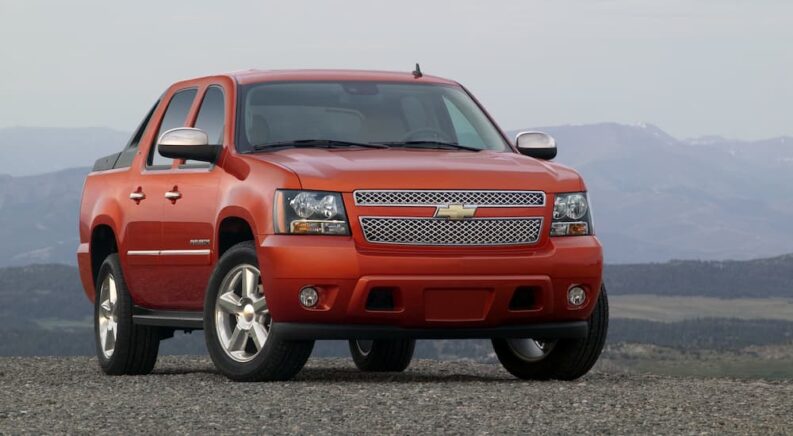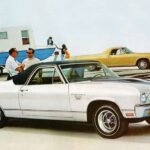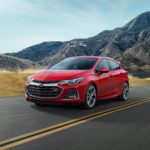Chevrolet is a well-known name both among auto enthusiasts and the American public at large. The automaker has many iconic nameplates in production today, from the lightning-quick Corvette to the hardworking Silverado. Chevy even lays claim to the longest-running nameplate in the industry with the Suburban, which has been continuously produced for over eight decades. But while these and many other models are still getting new versions today, others can only be found in an auto show or, if you’re lucky, at a used Chevy dealership.
Today, we’re going to take a look at some discontinued Chevy vehicles that live on in our hearts. Some are well-beloved icons, while others are obscure gems that deserve to be remembered for their unique attributes. Let’s dive in and explore five models that may have rolled off the production line for the last time but will never be forgotten by the enthusiasts who love them.
1. Impala: 1958-1985, 1994-1996, 2000-2016
The Impala can find fans among disparate groups of people, from nostalgic boomers to car collectors to Supernatural fans. The full-size car first hit the scene in 1958, where it reigned as a top-of-the-line option for Chevy buyers looking for automotive excellence. As other nameplates stepped in to take its place, the Impala was relegated to an entry-level option in later years and was discontinued altogether in 1986. For the 1992 Detroit Auto Show, a sporty Impala SS brought the model back into the public eye, and the concept car became a real boy when it went into production for the model years 1994-1996.
Four years later, the Impala made yet another return from the grave. From 2000 to the 2016 model year, the Impala wore many hats. The sporty SS version featured a powerful 5.7L V8, a version designed for the police got a modified suspension system, a 50th-anniversary edition lured in collectors with exclusive features, and many bare-bones versions of the car were sold to fleets. But ultimately, the Impala gave way to the rise of SUVs and has driven off into the sunset once more. Its legacy lives on in Chevy’s remaining car models, like the midsize Malibu, which also strives to be a stylish option for drivers who want a well-rounded car.
2. SSR: 2003 – 2006
While the Impala is a classic model with a well-known name, the SSR is a blip on the radar from the early 2000s that many have forgotten entirely. That’s a shame because the Super Sport Roadster’s unique design made for a car that was just plain fun. The retro exterior aesthetic is round and cheerful, with a front end that’s practically grinning from headlight to headlight. A retractable hardtop roof made it a perfect beach cruiser in sunnier climes. And its 5.3L V8 engine packed enough of a punch to make for some thrilling joyrides.
While the SSR is a fun vehicle with a lot going for it, it was a bit confusing to classify, making it a tough sell. It had a truck platform with a covered bed in the back and the looks of a speedy roadster. The combination makes it hard to know at a glance who the target demographic is, which could explain why it was gone so soon. But in a market where niche models like the Volkswagen Bus and GMC Hummer can be reborn as EVs, we can all dream of a day when this quirky Chevy makes a modern comeback.
3. HHR: 2006 – 2011
In the years when drivers were still in mid-transition between cars and SUVs, there were plenty of models trying to provide the best of both worlds in unique ways. One model that firmly belongs in this category is the Chevy HHR (short for Heritage High Roof). The vehicle’s shape was inspired by Chevy models from the 40s and 50s like the 1947 Suburban, and the high roof it’s named for gives off retro vibes at a glance. Of course, it would be silly to say that the design wasn’t also inspired by another retro-looking model with a high roof: the Chrysler PT Cruiser. The PT Cruiser debuted for the 2001 model year, and the HHR came along five years later for the 2006 model year. The HHR’s demise also followed closely behind its Chrysler equivalent: the Cruiser’s last model year was 2010, while the HHR’s was 2011.
Though style is the vehicle’s defining characteristic, its body shape did have some practicality. The unique silhouette gave it a roomy cargo area in the back without raising its center of gravity to SUV levels. While its boxy shape isn’t exactly peak aerodynamic design at work, there was an SS model that had enough power to get some real speed. At the end of the day, Chevy’s lineup of popular SUVs simply made the HHR unnecessary as drivers grew to prefer a higher driving position and no longer wanted to cling to the attributes of a car body style.
4. Avalanche: 2002 – 2013
The rise of SUVs didn’t just affect car design: trucks were also pulled into the trend. The Avalanche was a product of a particular time in American history when gas was cheap, and passenger vehicles were getting bigger and bigger. It was essentially a mash-up of the Silverado and the Suburban, providing a massive amount of space for both cargo and passengers. With its innovative midgate, the ordinarily rigid border between the box and the cabin was opened up, giving it a versatile design that allowed drivers to get creative with their cargo configurations. The industry took notice of the Avalanche’s unique design right away; the model was named Motor Trend’s 2002 Truck of the Year, and the following year, the 2003 model sold more than 90,000 units.
Over the years, the Avalanche got plenty of revisions, including a full makeover for a second generation launched in 2007 that gave it a cleaner and more modern look to match the likes of the Suburban and Tahoe. It stuck around long enough to get modern conveniences like a USB port, built-in navigation, and Sirius XM satellite radio in its later years but ended its run after the 2013 model, which marked the model’s exit with a special Black Diamond edition to soften the blow for fans. Ultimately, it seems drivers were fine deciding between Chevy’s capable pickups and spacious SUVs and didn’t need a vehicle in the middle of the Venn diagram, but we’ll always remember this innovative Frankenstein of a truck.
5. SS: 2014 – 2017
The letters “SS” (short for Super Sport) have been added to several popular Chevy nameplates, including some featured earlier on this list, in order to indicate a version that delivered thrilling driving dynamics and stellar performance. But for four years, the name SS stood alone, the model name for a powerful sedan that was armed to the teeth with performance-grade parts. This baby had a 415-horsepower 6.2L V8 engine under the hood, standard Brembo disc brakes to keep that power under control, and a magnetic-ride suspension to keep rides smooth no matter what. Pairing all of that with a spacious interior makes for a car that’s plenty of fun without being too impractical for day-to-day driving.
Compared to Chevy’s surviving performance cars, the Camaro and Corvette, the SS definitely didn’t bring much style to the table. While not every muscle car driver wants to show off every time they leave the house, plenty of enthusiasts see style as a big part of the appeal. Perhaps that kept the SS from taking off despite its high points. While modern Chevy fans still have some great hotrods to choose from in the current lineup, we still shed a tear thinking back on what might have been if the SS had stuck around a little longer.




